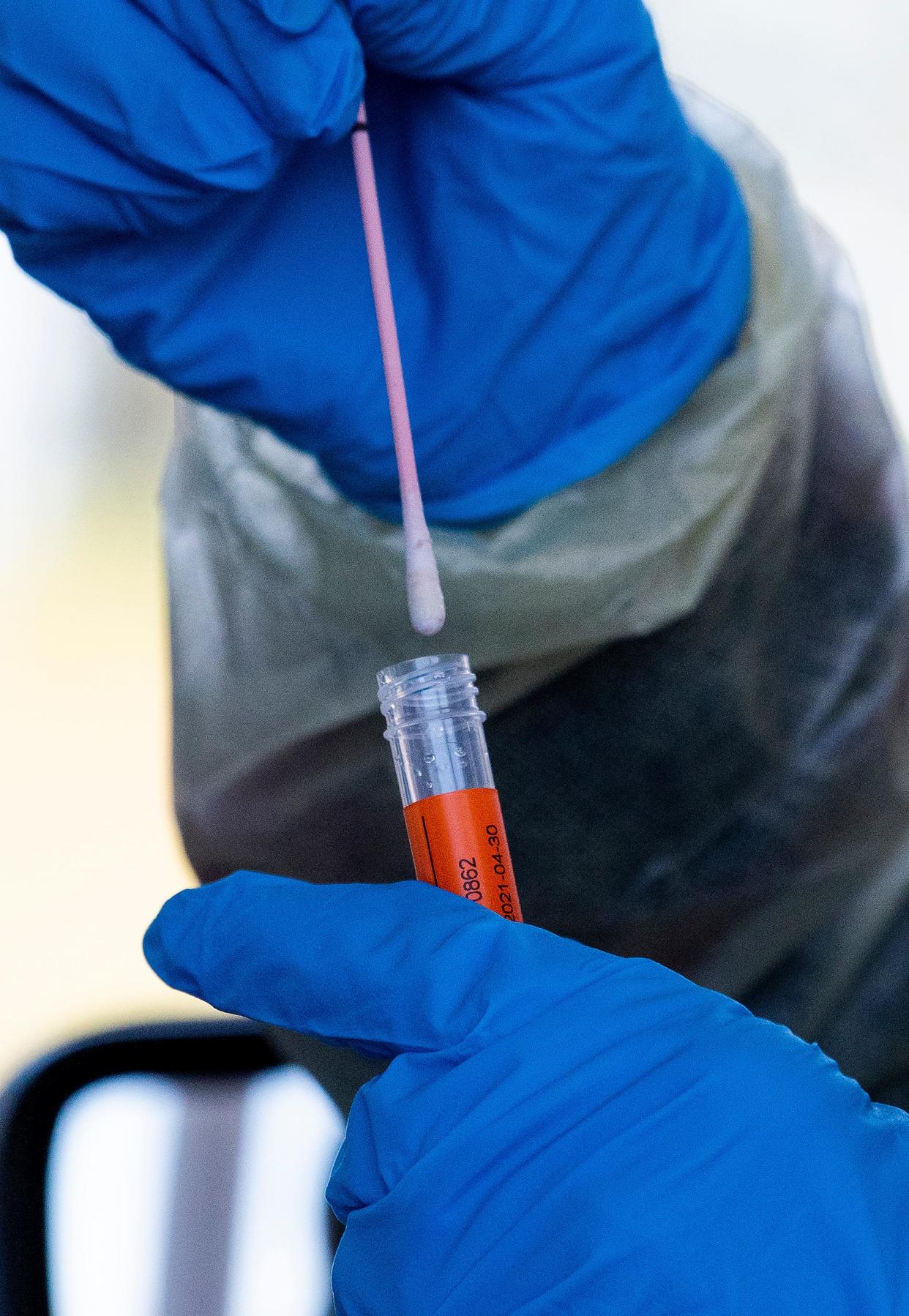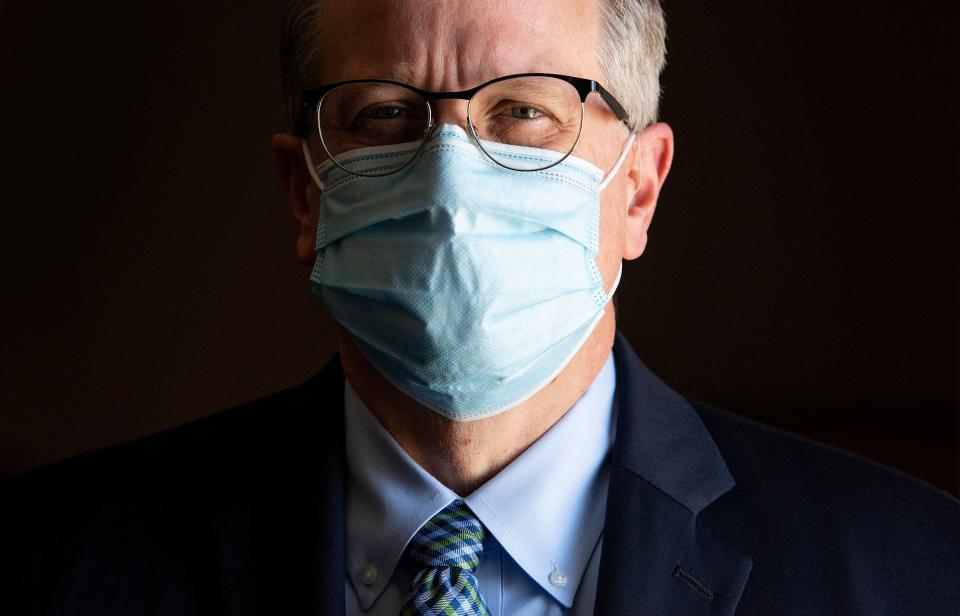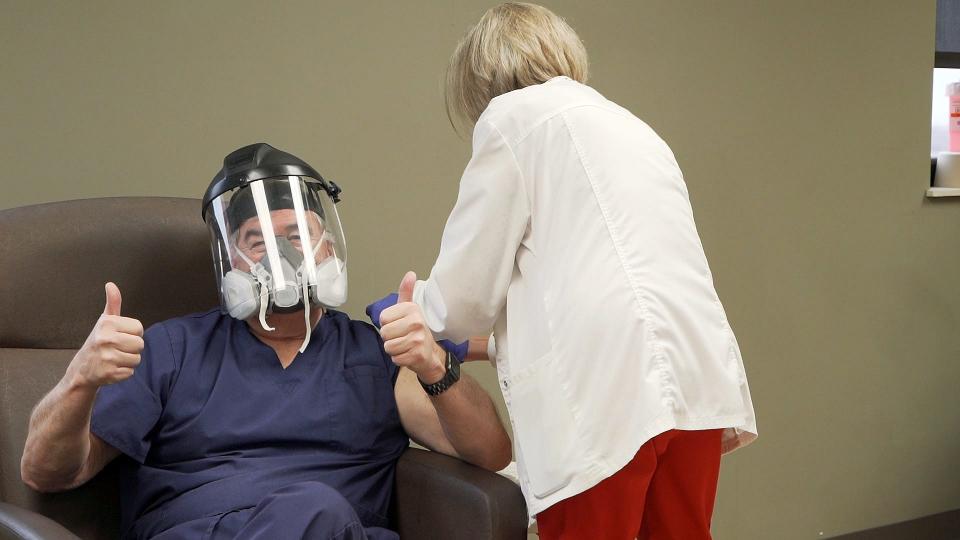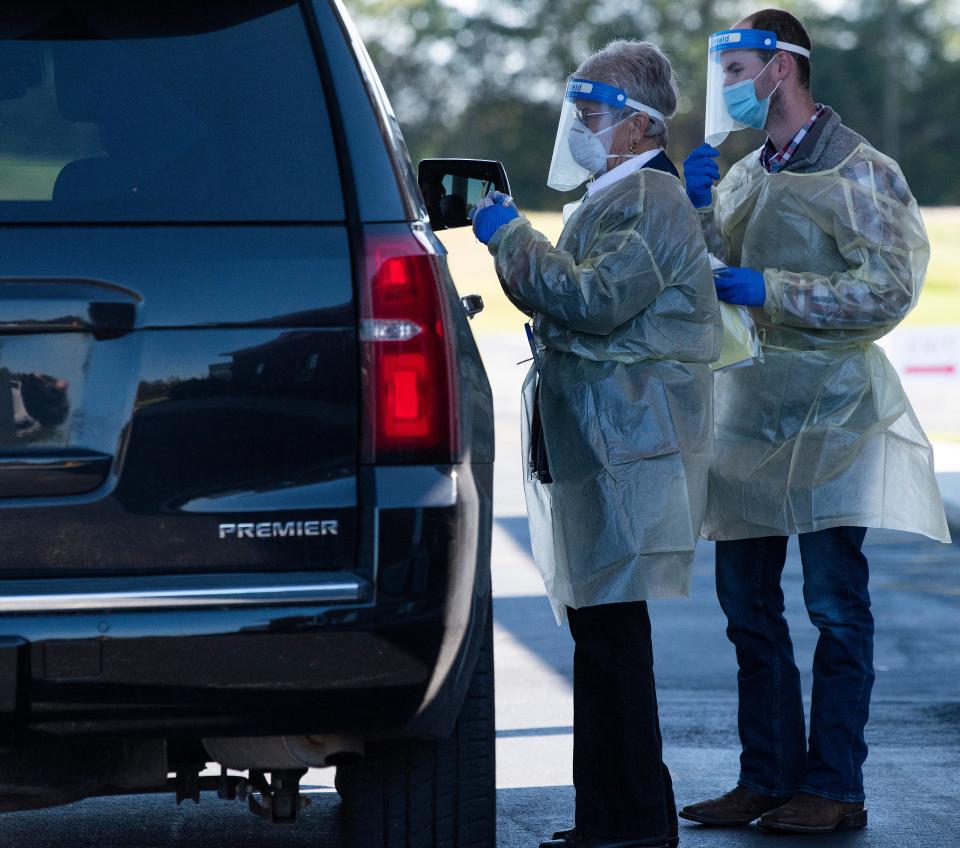Omicron wave may be cresting in Alabama, but ICU and COVID test shortages persist

The end could be near — not the end of COVID as we know it, but the conclusion of the stubborn omicron surge.
“I feel pretty strongly that this epidemic is cresting. It's peaking right now in Alabama. I think perhaps by the end of the month, we will see this downturn coming,” UAB infectious disease specialist Dr. Michael Saag said in an Alabama Medical Association livestream on Thursday.
In countries such as South Africa and the United Kingdom, and even northeastern states like Massachusetts and New York, case numbers are declining or have returned to pre-surge numbers altogether.
Citing these instances, State Health Officer Dr. Scott Harris predicted that “we might see some improvement in two or three weeks.” However, he said telling the future when it comes to COVID is a hard thing to do.
Omicron: Omicron variant is impacting more kids in Alabama than any other form of COVID-19. Here's why
COVID: Record number of Alabama children hospitalized with COVID-19

Hospital intensive care units fill up
Currently, the entire state is low on COVID tests, and ICUs across the state have begun to hit their maximum capacities.
Not including over the counter tests, Harris estimates between 25,000 and 30,000 COVID tests are done each day, with about 2,000 of those being admitted to the hospital.
These increased hospitalizations are putting a strain on hospitals throughout the state.
In Central Alabama, ICUs have entered negative numbers of available beds, including in Montgomery.
All 24 of Jackson Hospital's ICU beds are full, as of Tuesday morning, and staff has temporarily converted six additional beds to treat overflow ICU patients.
"There's no room at the inn," Jackson Hospital marketing director Mia Mothershed said.
Baptist Health was unable to provide data on its three area ICUs by time of publication. As a region, though, East Central Alabama has -11% ICU availability, according to Alabama Hospital Association data released on Jan. 17.
That same data shows approximately 120 open ICU beds left in all Alabama hospitals. Most regions in the state have low or negative capacity for new ICU patients.
“It's just mind boggling, and we don't know how much longer it's going to go on,” Harris said.
Since COVID cases began to spike again in late December, Alabama’s daily case numbers have increased eightfold.
The state averages over 11,300 new cases of COVID and over 2,400 COVID hospitalizations per day right now, both of which are among highs that the state has seen since March 2020.
'Incidental' hospitalizations rise
The dominant variant, omicron, does not seem as severe as other variants, but it is much more contagious. For these reasons, many of the COVID patients in Alabama hospitals were initially admitted for other reasons, like a heart attack or a car accident.
Hospitals count these patients as “incidental” hospitalizations.
Saag said UAB tracks those numbers carefully, though there is no differentiation between incidental and intentional COVID hospitalizations in the Alabama Department of Public Health data.

“At UAB Hospital two days ago, we had about 200 people in the hospital. That's a little lower than the high water mark that we had before, but it's still significant. About 30% to 40% of those individuals are what we call incidental,” Saag said on Thursday.
Most of the incidental patients don’t experience intense COVID symptoms, but hospitals still have to treat them as they would any other COVID patient.
“While we're glad there are less people being admitted for COVID, there's still a lot of people in the hospital with COVID, which turns out to be the same thing from a hospital’s standpoint,” Harris said.
Either way, hospitals have to isolate the patient, use personal-protective equipment to treat them and risk the potential infection of the staff that treat them.

Medical personnel being infected with or exposed to COVID has become an increasing problem in Central Alabama hospitals. Dr. David Thrasher, a pulmonologist in Montgomery, said staff being out with COVID is a large reason why hospitals in the River Region don’t have available ICU beds right now.
“Our ICUs are completely full here, okay? We’re in pretty bad shape,” he said.
COVID treatments coming to Alabama
Exacerbating the problem is the fact that effective treatments for COVID are in such short supply.
Of the three most prominent monoclonal antibodies, two have been proven ineffective against the omicron variant. The one that doctors suggest is the GSK Sotrovimab, but there is not enough of it for every patient.
Last week, Harris said Alabama received 420 doses that were able to be distributed to 70 locations throughout the state. This week, Alabama will get slightly more and will be able to distribute them to roughly 100 locations.
Apart from monoclonal antibodies, there are two antiviral pills on the market for COVID, which are also both difficult to come by. Saag said Merck’s Molnupiravir is about 30 to 25% effective, while Pfizer’s Paxlovid is 85 to 90% effective.

These treatments are the last line of defense against COVID, and all three doctors agreed that vaccination is the best bet at preventing hospitalization or death from the disease.
“For all the people who are still hesitant about a vaccine, look around at your neighbors who have been vaccinated, and ask yourself, how many of them have gone to the hospital from the side effects of the vaccine? And then ask yourself the question among your neighbors, how many who weren't vaccinated when they got infected went to the hospital?” Saag said. “There's your answer about safety.”
While only 48% of the state is fully vaccinated, that number is even lower for school-aged children.
Some 10.5% of children aged five to 11 have received at least one dose, and 35.5% of young people aged 12 to 17 have received at least one dose.
Doctors consider the low vaccination rate among children as a contributing factor to the continually rising, record-breaking COVID hospitalizations among children in Alabama.
Still, Thrasher and Saag are thankful that the vaccination rate is where it is.
If a variant such as omicron hit before the vaccine, they say there would have been “bodies stacking up” in the street.
Hadley Hitson covers the rural South for the Montgomery Advertiser and Report for America. She can be reached at hhitson@gannett.com.
This article originally appeared on Montgomery Advertiser: Omicron in Alabama: River Region runs out of ICU beds, COVID-19 tests

